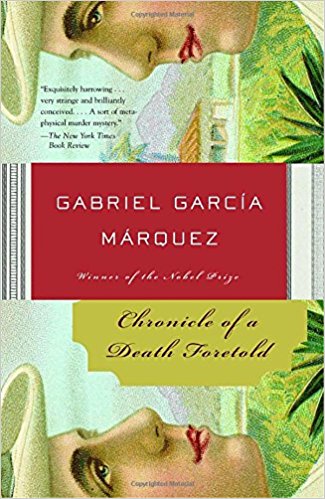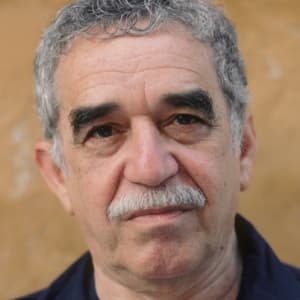Chronicle of a Death Foretold Summary
7 min read ⌚
 Nowadays, it seems that there are more CSI-themed shows than there are TV shows altogether.
Nowadays, it seems that there are more CSI-themed shows than there are TV shows altogether.
True, there are as many books and series of books on the subject – but, “Chronicle of a Death Foretold” is written by none other than Gabriel Garcia Márquez, your favorite 20th-century writer.
So, what are you waiting for?
Who Should Read “Chronicle of a Death Foretold”? And Why?
If you are anything like us, then, for some reason, you have a difficult time resisting reading the Crime section.
Sure, it’s terrible news, and sometimes you cringe at the very titles there, but you are unable to skip it nevertheless – or forget any of the things you read there for quite some time.
Well, if so, “Chronicle of a Death Foretold” is certainly a book you’ll like. It’s written as if a journalistic reconstruction, and it chronicles a murder which
Plus, it’s fiction, so you know that nobody gets hurt in the end.
Oh, no – wait a second: it’s based on a real-life event that happened to a couple Gabriel Garcia Márquez knew.
All right down to the last detail – except the most important one.
You’ll see which one in a minute.
So, it’s basically like reading a story from the Crime section – only that the names are changed. And it is written by one of the greatest authors of the 20th century.
In a style which will hook you up for eternity!
Now, who wouldn’t want to read that?
Gabriel García Márquez Biography
Gabriel García Márquez – or in full: Gabriel José de la Concordia García Márquez – was a Columbian novelist and short-story writer, considered one of the greatest writers in the history of Latin American literature, and one of the most important authors of the 20th century.
– or in full: Gabriel José de la Concordia García Márquez – was a Columbian novelist and short-story writer, considered one of the greatest writers in the history of Latin American literature, and one of the most important authors of the 20th century.
After dropping out of law school, he embarked on a career in journalism and spent more than seven years to find a publisher for his debut novella, “Leaf Storm,” which saw the light of day in 1955.
He followed that up with “No One Writes to the Colonel,” another novella which Márquez considered his best even in the later years of his life.
However, critics usually regard “One Hundred Years of Solitude” as his magnum opus – and it is certainly the book which made him famous, selling over 30 million copies and being translated into almost forty languages.
Possibly the leading proponent of a style called magical realism, Márquez wrote six other novels, each of which found a large audience and critical praise: “The Autumn of the Patriarch,” “Chronicle of a Death Foretold,” “Love in the Time of Cholera,” “The General in His Labyrinth,” “Of Love and Other Demons,” and “Memories of My Melancholy Whores.”
He is also the author of some unforgettable short stories (“The Handsomest Drowned Man in the World” and “A Very Old Man with Enormous Wings”) and an autobiography, “Living to Tell the Tale.”
He won the Nobel Prize in Literature in 1982.
After his death in 2014 – a national tragedy – the President of Columbia called him “the greatest Colombian who ever lived.”
Plot
As we told you above, “Chronicle of a Death Foretold” is a mixture of realism, research journalism, and a detective story.
Also – it’s not exactly written in a linear fashion.
But that’s how we’re going to reconstruct for you its summary, because, otherwise, we doubt that you’ll be able to follow.
Anyway, the title is a giveaway: we’re going to read a story the first sentence of which reveals the ending right off the bat:
On the day they were going to kill him, Santiago Nasar got up at five-thirty in the morning to wait for the boat the bishop was coming on.
So, no tension, no drama: Santiago Nasar will be killed by the end of the novella.
Makes you think: what then is the novel about?
Could it be about the murder – the good old whodunnit mystery way?
Or about the reason?
Well, wrong and wrong.
You find out both very soon after.
But, so does everybody – and that’s what made Santiago’s death foretold. And what made Márquez write the novella in the first place.
But, we’re getting ahead of ourselves.
So, six months before Santiago was murdered, a wealthy guy by the name of Bayardo San Román comes into his town looking for a wife.
And after some time – he finds one; or rather is given one.
We’re talking about Angela Vicario, a poor girl who’s not exactly interested in Bayardo but who has the misfortune of being a woman living in a machoistic and (consequently) misogynist community.
(Don’t believe us: please, visit the house of Bernarda Alba and have a chat with Cleófilas Enriqueta DeLeón Hernández – that is, if her husband’s not around.)
Four months after Bayardo chooses Angela to be his wife, he marries her in a ceremony so fabulous that it would have certainly made it into a reality TV show if they had such things back in the 1950s.
And then, two hours later, on their first wedding night, disaster strikes:
Bayardo returns Angela to her family, claiming that she’s not a virgin!
You know what we’re talking about: damaged goods.
Angela’s mother would have none of it and is determined to find out how her daughter had lost her virginity.
After many hours of beating, Angela confesses: it’s Santiago Nasar’s fault.
Now, there are reasons why this is not a permissible interrogation technique in court. When someone’s beating you to a pulp, you aren’t exactly interested in telling the truth, but stopping the blows raining upon you – anyway you can.
So, that’s the detail which is different than the real story fictionalized here by Márquez: unlike in the real world, in the novella, we don’t really know if Santiago Nasar had anything to do with Angela Vicario’s lost virginity.
He was a rich womanizer, but nobody had ever seen the two together.
And, moreover, when finally told about what was going to happen to him, he has no idea what people are saying to him:
From the first moment I understood that he didn’t have the slightest idea of what I was saying[…] Then [Nahir Miguel] asked him outright if he knew that the Vicario brothers were looking for him to kill him. He turned pale and lost control in such a way that it was impossible to think that he was pretending[…] “I don’t understand a God-damned thing,” Santiago Nasar said.
Then, supposing that he’s innocent, why Santiago Nasar of all people?
Well, because he’s an Arab.
It’s simple as that.
When you don’t know who the perpetrator is – blame it on the minority.
In the U.S. – it’s the blacks; in Columbia – it’s the Arabs.
In the quoted passage, we already revealed to you that once it’s known who the perpetrator, Angela Vicario’s twin brothers, Pablo and Pedro, set out to kill Santiago.
Not because they want to – in fact, at one point, one of them explicitly says out loud that he doesn’t want to do that.
And, moreover, they both tell their plan to about a thousand people on their way to Santiago, probably so that somebody stops them.
Then why don’t they just not kill him, you ask?
Well, because in a machoistic society, it’s their duty.
Meaning: they have no choice whatsoever.
A great way to organize a society, don’t you think?
Chronicle of a Death Foretold Epilogue
Have you ever read something about the murder of Kitty Genovese?
She was stabbed outside her house even though there were 38 people who witnessed the murder and could have prevented it.
None of them did.
Why?
Because they were humans.
Psychologists were quick to describe the social phenomenon and name it the bystander effect; and it’s exactly what happens in “Chronicle of a Death Foretold” once the whole town (including the police) knows that the Vicarios are off to kill Santiago Nasar.
In a nutshell, the bystander effect functions this way: when someone else can do it and doesn’t do it, why should I do it?
So, by the time Santiago finds out, it’s already too late, and he is killed at his own doorstep.
The twins are acquitted after awaiting the trial for three years in prison, and the rest of the Vicarios leave the town due to the scandal.
So does Bayardo San Roman who – out of nowhere – now that he has disgraced her, becomes Angela’s very profound love interest.
So profound, in fact, that Angela writes him letters for seventeen years straight until, one day, he finally returns to her, carrying all the letters, none of them opened.
Oh, that’s so romantic! And such a happy ending!
No, it’s not!
Remember: Santiago Nasar is dead.
And the whole town has some very serious issues.
Like this summary? We’d like to invite you to download our free 12 min app, for more amazing summaries and audiobooks.
“Chronicle of a Death Foretold PDF Quotes”
He always considered death an unavoidable professional hazard. Share on X They looked like two children, she told me. And that thought frightened her, because she'd always felt that only children are capable of everything. Share on X He was healthier than the rest of us, but when you listened with the stethoscope you could hear the tears bubbling inside his heart. Share on X She was certain that the Vicario brothers were not as eager to carry out the sentence as to find someone who would do them the favor of stopping them. Share on X The truth is that she spoke about her misfortune without any shame in order to cover up the other misfortune, the real one, that was burning in her insides. Share on XOur Critical Review
Márquez hadn’t published any work of fiction for a while before “Chronicle of a Death Foretold” appeared. And soon after it was published, Salman Rushdie – the Salman Rushdie – wrote a review for the “London Review of Books.”
His conclusion:
“For a time, Garcia Marquez abjured fiction: whatever the reasons for his return to the form, we can only be grateful that he is back, his genius unaffected by the lay-off.”
Do we have to remind you, once again, that it’s Rushdie writing the above?
Emir is the Head of Marketing at 12min. In his spare time, he loves to meditate and play soccer.







